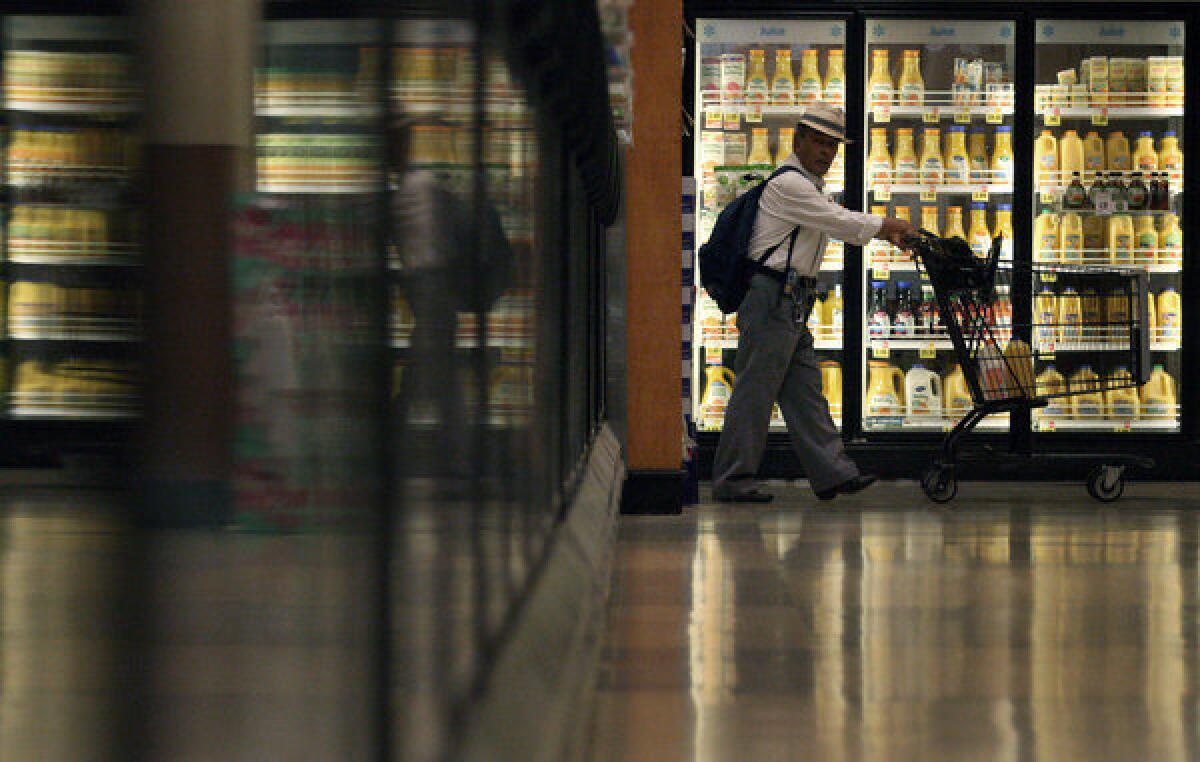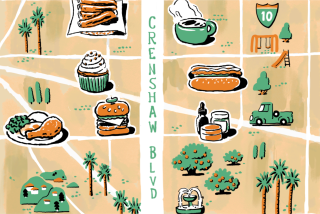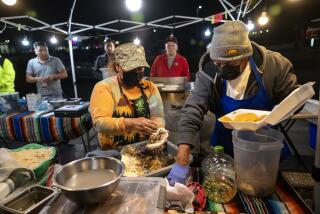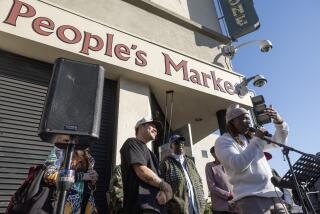Poor, mostly black areas face supermarket ‘double jeopardy’

Poor, mostly black neighborhoods face double jeopardy when it comes to supermarket access, according to a study recently published by the journal Preventive Medicine.
That may not sound like news at all: Scholars and activists have long fretted that poor, minority neighborhoods have worse access to supermarkets, which is tied to less healthy diets.
But researchers from Johns Hopkins University wanted to see how different neighborhood traits -- poverty and racial makeup -- were related to the problem. For instance, what did it mean to be in a poorer white neighborhood, versus a wealthier black neighborhood?
Researchers compared access to supermarkets, smaller grocery stores, and convenience stores in largely black, Latino, white and racially integrated neighborhoods in a national sample of more than 65,000 census tracts. Earlier research showed that convenience stores and groceries, which are smaller than supermarkets, stock foods higher in fat, sugar and salt.
The study found that living in a poor, mostly black neighborhood presented “a double disadvantage” in supermarket access. Unsurprisingly, poor black neighborhoods had fewer supermarkets than wealthier black neighborhoods.
But they also had fewer supermarkets than poor white neighborhoods, suggesting that race still played a role apart from poverty. In fact, the study showed that black neighborhoods with little poverty had fewer supermarkets, on average, than high-poverty white areas.
“Our study found that it’s not simply an issue of poverty,” wrote Kelly Bower, an instructor at the Johns Hopkins School of Nursing, in an email to the Los Angeles Times. “In fact, a racially segregated poor black neighborhood is at an additional disadvantage simply because it is predominantly black.”
Researchers wrote that the supermarket shortage appeared to be more severe in urban poor black neighborhoods than rural ones, suggesting that strategies to improve access to healthy food should not be rolled out nationwide, but targeted at disadvantaged urban areas.
The patterns were somewhat different for Latino neighborhoods: Though they had fewer supermarkets than white neighborhoods, Latino areas had more grocery stores, no matter their poverty level. Bower said that other studies suggest groceries in Latino areas may sell healthier food than those in black neighborhoods, which means their health effects might be different.
The study also found that white neighborhoods generally had the most convenience stores, and black neighborhoods the fewest. However, if white neighborhoods “have equally good access to supermarkets and high quality foods, they may not be as reliant on the convenience stores as a regular source of food,” Bower wrote.
The Johns Hopkins study used race and poverty data from the 2000 census, overlaid with information about supermarkets and other stores from the commercial database InfoUSA.
ALSO:
Scientists identify a new dolphin species off Australia
Bad vibrations? Truck drivers at risk for aggressive prostate cancer
Gardening, hobbies can keep older people heart-healthy, study shows







